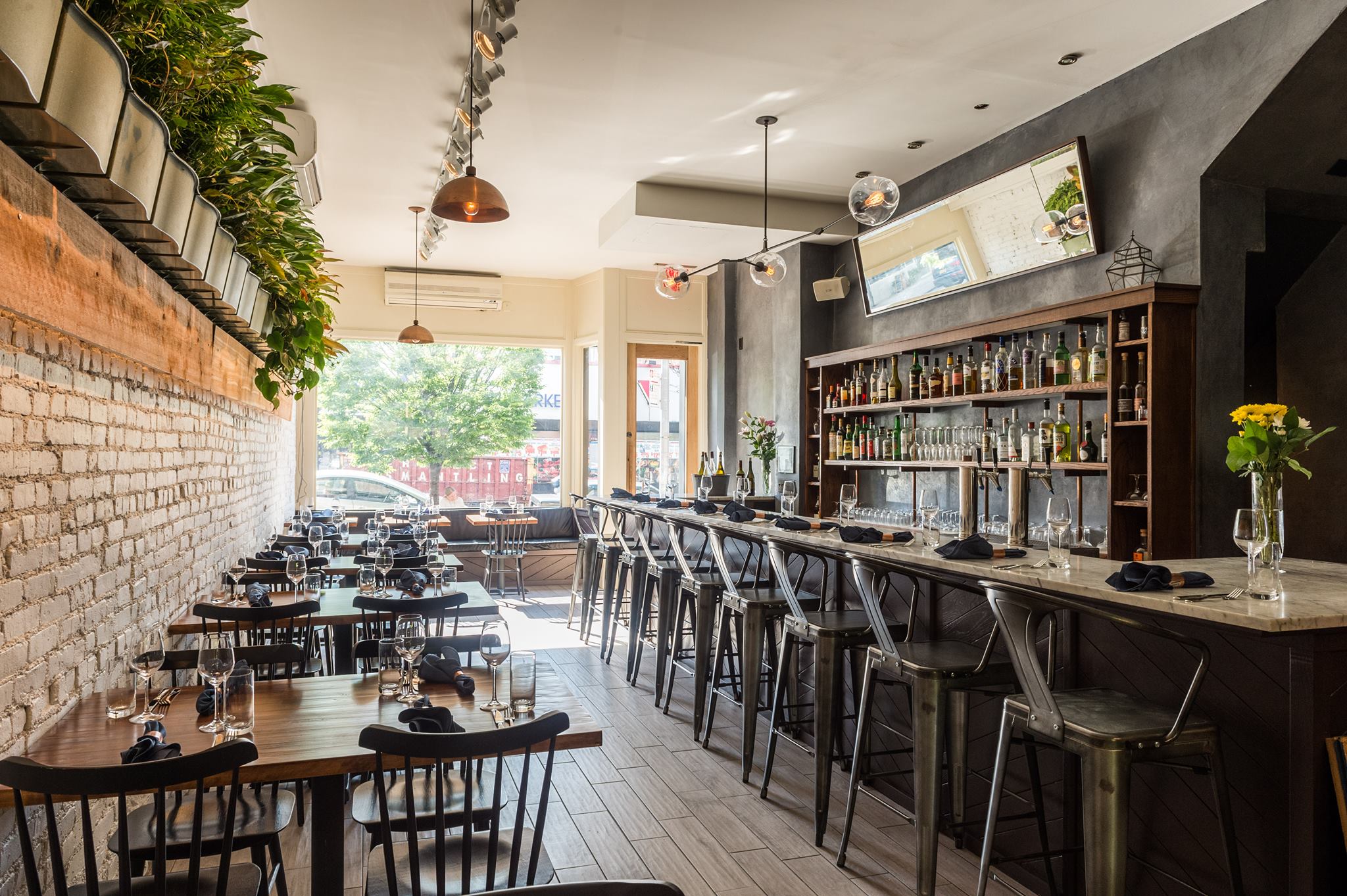'Fine Casual' May Be Buzzy, but in the U.S., Tradition Still Holds Strong

Photo Caption: Brooklyn's Olmsted has a distinct neighborhood feel, but attracts a nationwide audience.
Skift Take
Lest we get caught up in a world of labels, let's recognize success where we see it: neighborhood, sit-down restaurants featuring high-quality food and top-notch service continue to operate thanks to a creative focus on what's working and what diners want.
In spite of current trends indicating the return to traditional formal restaurants and the onset of counter service-only fast fine dining, casual, higher-end, sit-down restaurants remain not only the backbone of fine American dining, but examples of creativity and good business sense.
These places combine well-executed and thoughtful (and of often small) plates, a neighborhood feel, and affordable pricing exert a nationwide influence. Sometimes described as “new American,” these restaurants often feature some sort of outside influence: Compere Lapin in New Orleans, for instance, blends Creole and Italian influences, Philadelphia’s Res Ipsa combines Italian and Mediterranean elements.
“Chefs, restaurateurs, and sommeliers have become public figures and led people to check out more serious and better food,” said Andrew Fortgang, the co-owner of Portland, Oregon’s Le Pigeon and Little Bird. The former is much-lauded and -loved fine dining restaurant with bare tables and blaring music; the latter a bistro with white tablecloths topped with butcher paper, an iconic copper bar, and a killer burger. "As Americans are eating out more, and truly appreciating good food and quality food in greater numbers, more people want to do that, and they may not be super wealthy," he continued. "Also, going out to eat is not for special occasions only. many want great food on a Tuesday after work."
Why would someone choose a sit-down spot for their casual Tuesday evening meal over a trendier and perhaps lower-cost option? "We feel that giving guests proper, hospitable, and warm service is an easy and cost-effective way for us to set ourselves apart," said Fortgang. "People go to specific restaurants for a combination of things, not just the food. The three big things are food, service, and ambiance or decor,” he continued. "That trifecta is what collectively influences the guest's decision to come back. Why on earth would we sacrifice one of them? Ever see a tripod with a missing leg?”
Fortgang alludes to momentum that’s been building for years: consumers dine out more. According to a recent Nielsen report, the period from 2003 to 2017 saw a 94 percent increase in total away-from-home food expenditure. Greg Baxtrom, chef of Olmsted in Brooklyn and an Alinea alumnus, seconds this opinion. "It's hard to find time for a five-hour tasting menu, not that there isn't the time and place for that," he told Skift Table. "Diners are so educated nowadays, and they want the quality and experience when they go out, without giving up an entire evening — or breaking the bank."
In fact, Olmsted’s most expensive menu item is currently a $24 duck dish. In Brooklyn, which had already been the cradle of so-called hipster farm-to-table food for a decade, the restaurant's 2016 opening, whose mission is summarized by "thoughtful dining experience without the pretension and the hefty price tag," was highly praised by New York critics Pete Wells and Ryan Sutton.
Baxtrom keeps the prices in check at Olmsted by making sensible choices. For example, he purchases scallops that are slightly torn, and swapped the idea of a lobster dish with an equally satisfying crawfish. He also grows vegetables in the restaurant’s backyard, and spotlights them on the menu. "We wanted vegetables and seafood to be a focal point on the menu, and have meat be more of an accent," Baxtrom said, adding it’s easier and more cost-effective to source high-quality, responsibly-grown vegetables than it is meat. Vegetable-first isn't just a New York trend; San Francisco restaurant Al's Place, named Bon Appetit's Best New Restaurant in 2015, embraces the meat-as-sides ethos, too.
And, of course, there's seasonality. Chris Gould, the owner and chef at Central Provisions in Portland, Maine, credits a close proximity to farms and the immediate availability of high-quality, local seafood to his affordable, high-end plates that pay very close attention to what is in season. The most expensive dish on his menu is $26.
"People think of peas as a spring vegetable and think they should be on menus starting in April," he said. "Here in Maine peas aren't available until June at the earliest and that’s if the spring is cooperative." He is eager to praise Portland for its food scene, where cooks are able to be creative and do their own thing, which, in turn draws people to come to the city. (Eater national critic Bill Addison agrees.) "The more people come to eat that food the more adventurous and playful we can all be.”
These types of chef-driven, sit-down, convivial restaurants may be the embodiment of fine dining in America, but that doesn’t mean there’s no room for change and innovation. “I think finding the balance for a relatively affordable, more casual high-end dining experience is trickier than going all out super luxe,” said Fortgang. “That has a road map.”
Angelica Frey is a writer living in Brooklyn by way of Milan. Twitter: @angelica_frey
